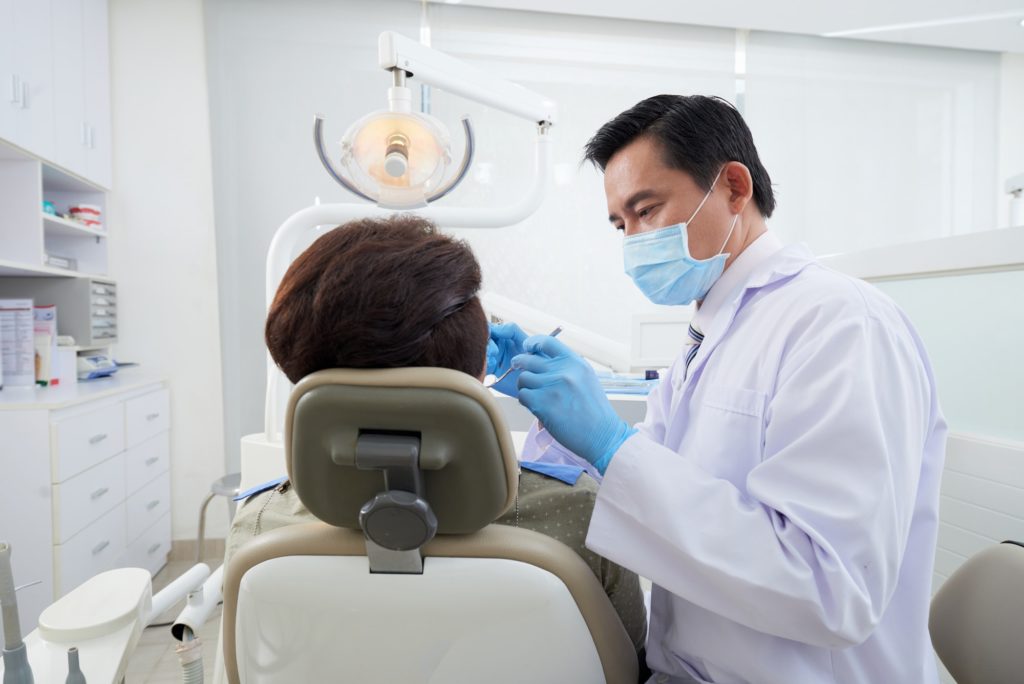Tartar on Your Teeth?

Learn more about Tartar buildup on teeth including how to prevent tartar buildup on your teeth, and how to remove tartar buildup.
Table of Contents
Did you know that tartar was found on human remains which were 400,000 years old? Tartar is a dental issue that is as old as humankind and that we still deal with today… Surprisingly, for a problem that has affected humans for our entire existence, it is super easy to prevent. But before we talk about preventing tartar, let’s see what it is.
What is Tartar On Teeth?
Tartar buildup on teeth is calcified plaque and happens when plaque sits on your teeth for an extended period. Tartar is formed by minerals in your saliva that get deposited into your plaque’s biofilm. The minerals cause the biofilm to harden and form tartar. Tartar also creates an environment that creates more plaque because it is much stickier than your teeth. This can lead to cavities and serious gum issues. Dental hygiene aside, this is also a smile-affecting appearance problem. Tartar stains very easily (often while you’ll notice most tartar being yellow), so smoking and drinking coffee while dealing with tartar will color your smile yellow.
Are Tartar and Plaque the Same Thing?
We can’t talk about tartar without its sidekick plaque. Think of plaque as a caterpillar you don’t want in your mouth. It starts small and then hatches into a big butterfly. That’s what plaque does. It begins by coating your teeth, then if left untreated, it builds up and turns into tartar. So it’s best to spot plaque right away before it can get worse and turn into tartar.
How to Prevent Plaque From Building Up On Your Teeth?
To prevent or stop plaque early on there are a few things you need to do. First and foremost, the best way to prevent plaque is by practicing good oral hygiene. Make sure to brush twice a day and floss. Unfortunately, plaque can be colorless so spotting it can be tough. It’s important to see your dentist every 6 months. They can use a dental mirror to spot plaque in hard-to-see places and remove it right then and there. Looking for the best at-home option for spotting plaque? You can get plaque-disclosing tablets at a pharmacy or drug store. These tables stain the plaque making it easy to find and may show you the areas where you need to brush and floss better.
How to Get Rid of Tartar on Your Teeth?
Since tartar bonds to your enamel, removing it won’t be as easy as plaque (which is why preventing and stopping plaque early on) is super important. A dental professional must remove Tartar because it’s hardened and bonded to your teeth.
A common theme you will see with potential issues in your mouth is that most are easily preventable if you practice the right dental hygiene and get the right care. Seeing your dentist and dental care team twice a year and having them spot and remove the hard-to-see plaque and brushing your teeth twice daily is pretty much all you need to be tartar-free. It’s so important to stop plaque early on so that you don’t have to deal with tartar. We know you don’t want to be at the dentist having calcified bits being scraped off your teeth with a scaler, so take the easy route and keep your smile bright white and tartar free!
Tartar FAQs
While tartar removal requires professional dental cleaning, there are steps you can take to reduce buildup:
- Establish a consistent oral hygiene routine that includes brushing your teeth twice daily with fluoride toothpaste and using a soft-bristled toothbrush to clean all tooth surfaces.
- Floss daily to remove plaque and food particles between your teeth and the gum line. Consider incorporating an antiseptic mouthwash into your routine to reduce bacteria in your mouth further. Eating a balanced diet and limiting sugary and starchy foods can also help prevent tartar formation.
- Schedule regular dental check-ups and cleanings, typically every six months, to have any existing tartar professionally removed and monitor your oral health.
Maintaining good oral hygiene habits and seeking professional dental care can effectively reduce tartar formation and promote a healthy smile.
Tartar, also known as dental calculus, is caused by the accumulation of mineralized plaque on the teeth. The interaction of bacteria, food particles, and saliva results in plaque formation, a sticky coating that sticks to the teeth. If plaque is not consistently removed by brushing and flossing, it might eventually harden and turn into tartar.
Tartar is a hardened substance that firmly attaches to the tooth surface and appears as a yellowish or brownish deposit. It can contribute to oral health issues like tooth decay, gum disease, and bad breath. Regular dental cleanings and maintaining good oral hygiene practices are essential in preventing tartar buildup.
Removing tartar from teeth requires professional dental intervention. Regular dental cleanings performed by a dental hygienist or dentist are necessary to remove tartar effectively. During a dental cleaning, special instruments such as scalers and ultrasonic devices are used to scrape and remove the hardened tartar from the tooth surfaces and below the gum line.
These instruments are designed to remove the deposits without causing harm to the teeth or gums. Between dental visits, it’s crucial to adopt good oral hygiene habits, including brushing and flossing twice a day, using an antiseptic mouthwash, and using an antiseptic mouthwash.
Tartar itself does not typically cause noticeable symptoms. However, its presence can lead to various oral health issues that may exhibit symptoms. These include persistent bad breath (halitosis), yellow or brown stains on the teeth, a rough or grainy texture on the tooth surface, gum inflammation (gingivitis), swollen or bleeding gums, receding gums, tooth sensitivity, and in advanced cases, gum disease or periodontitis. It’s important to note that it cannot be removed through regular brushing and flossing and requires professional dental cleaning to prevent or address these symptoms and maintain good oral health.
